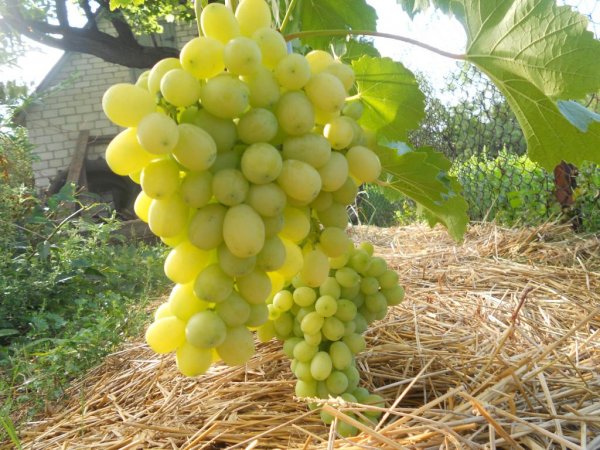Laura grapes (flora) are among the most favorite table varieties. The plant is known for good yield, excellent taste. These differences have become major, because of which many gardeners prefer to grow crops.
Table of contents
Description of grapes varieties Laura
Let's start with the description. Culture derived Ukrainian breeding specialists. Shoots differ in average growth rate, the number of fruit bearing reaches sixty - eighty percent of the entire bush.
Clusters of conical shape, the average weight of each exceeds one kilogram. Their length reaches forty centimeters. Pollination of inflorescences and the power of the vines have a significant impact on the density and mass of clusters. As a rule, they are formed the same, differ from each other in weight and size rarely.
The foliage is five-lobed, with dissected tips, of dark green color.
Ripening early, it will take from one hundred and ten to one hundred twenty days from the day the ovary is formed. One adult bush is capable of producing up to forty kilograms of crop.
Laura is frost resistant, withstanding cold in - 23 C.
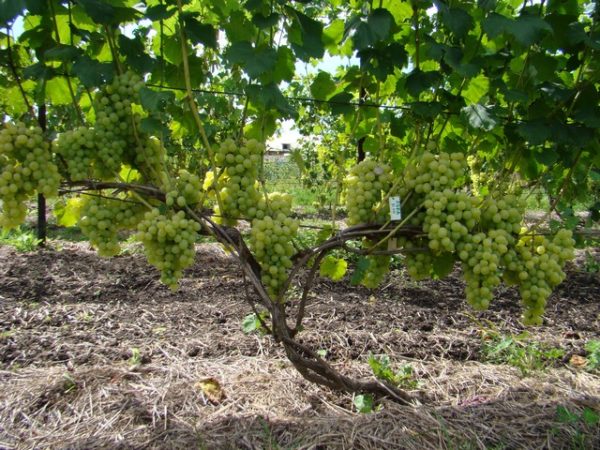
Characteristics of berries
They are oval, slightly oblong or slightly cylindrical in shape. The weight of one berry reaches seven - ten grams, length - from three to four centimeters.
In the amount of berries can be even larger if there is a tall stock. But at the same time their aging period increases and the quality of taste decreases. On the stalk, the berry keeps firmly, does not fall for a long time.
The skin is firm and crispy. The berries are tasty, with notes of nutmeg, the combination of sourness (from 6 to 8 grams per liter) and sugar (from twenty percent) is balanced successfully.

The advantages and disadvantages of the variety
The main positive signs of culture include:
- high yields, size of berries;
- harmonious level of sugar and acid;
- excellent taste, ability to maintain marketability during long-term transportation;
- berries firmly held on clusters, even during large harvests;
- the variety is able to withstand fungal diseases;
- moisture does not adversely affect the external signs of the berries;
- the culture is characterized by high rates of pollination, tolerates winter frosts.
It should be noted that Laura has a number of negative qualities:
- the sweetness of the berries directly depends on the duration of the cool period;
- berries are prone to damage from wasps;
- the crop is characterized by the instability of annual harvests;
- if the clusters are massive, then the size of the berries decreases, they appear more sour taste;
- the variety is susceptible to mildew.
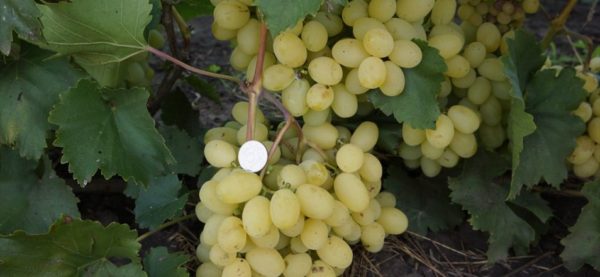
Landing
In order for grape plants to grow well and bear fruit well, certain requirements must be observed during planting. The soil composition should not be clay and excessively salty. You should not choose a place under the culture, if the groundwater is too close to the surface.
Place for landing should be well lit by the sun, have good protection from drafts. For the northern regions it is recommended to plant grape plants along the walls of buildings or near fences.
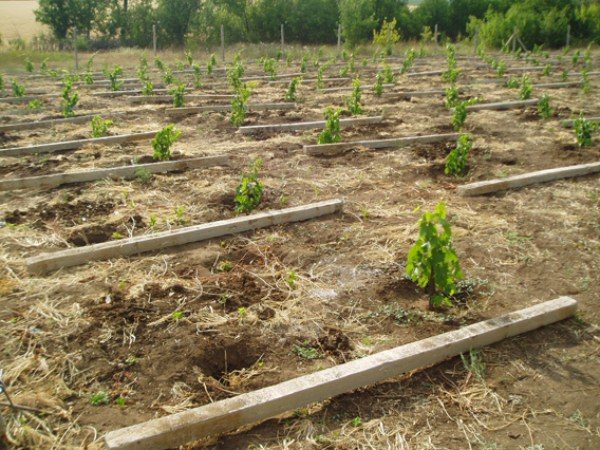
Before planting, a fossa is prepared in which potash, nitrogen and phosphate fertilizers are introduced. The landing scheme is chosen 1.5 by 1.5 meters, at least half a meter should be retreated from the barrier (wall or fence).
Fertilizers applied to the pit so that they are better absorbed, it is necessary to water periodically, and after a couple of weeks you can plant a plant. The support posts or trellis are installed in advance.
Care for a young and mature vine
After completing the planting of vines or grafting, you should create a permanent watering for the young vineyard.For one young bush it is necessary to bring three buckets of moisture, and for older plants, this rate is doubled.
To preserve moisture in the soil and prevent the growth of weeds, the soil around the vines is mulched with organic matter.
The introduction of fertilizer formulations is another prerequisite. Their number and composition are determined by the state of the soil and climatic conditions. Many gardeners consider dung as the most universal remedy.
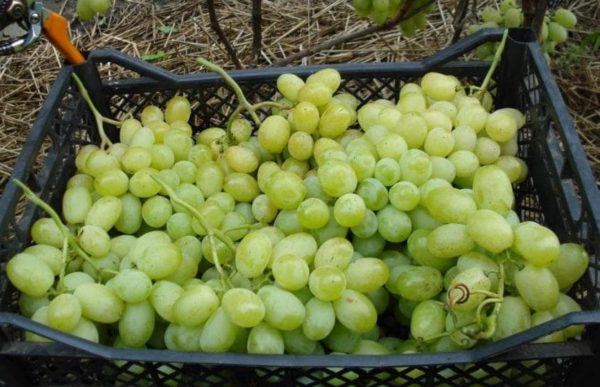
Periodically, grape bushes must be pruned. Before the first fruiting, the weakened and dried twigs and excess processes are removed.
Vineyard perfectly tolerates frosts. But if the plant is cultivated in regions in which constant temperature drops are observed, then the best solution would be to build shelters for the bushes.
Breeding methods
This can be done by transplanting seedlings or cuttings. In the first variant, roots are germinated in advance on the vine, then the cuttings are buried twenty centimeters into the soil.
When breeding cuttings from young shoots pruned shoots, maintain them in a cold place, then for an hour, fill with warm water. Inoculation is carried out on an old plant, having previously treated the shoot with “Humate”.
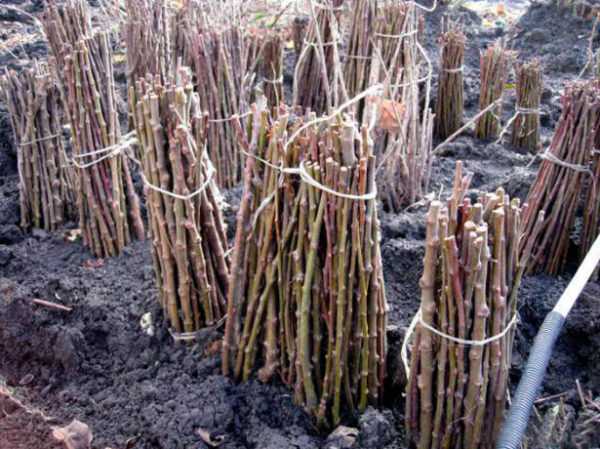
Diseases and pests
The main danger to the plant is oidium. To protect the vines from this disease, they are treated with a sulfur preparation, manganese solution, mullein extract, special chemicals. Simultaneously with such treatments, you can perform preventive measures for mildew, using Borde fluid, nitrafen or iron sulfate.
It is necessary for mice to lay burnt pieces of felt or wool around the vines in order to scare off rodents with unpleasant odors.
Many gardeners point out the culture’s flexible attitude toward care. If you properly care for the grape bushes, you can get a tasty harvest even under adverse conditions.
